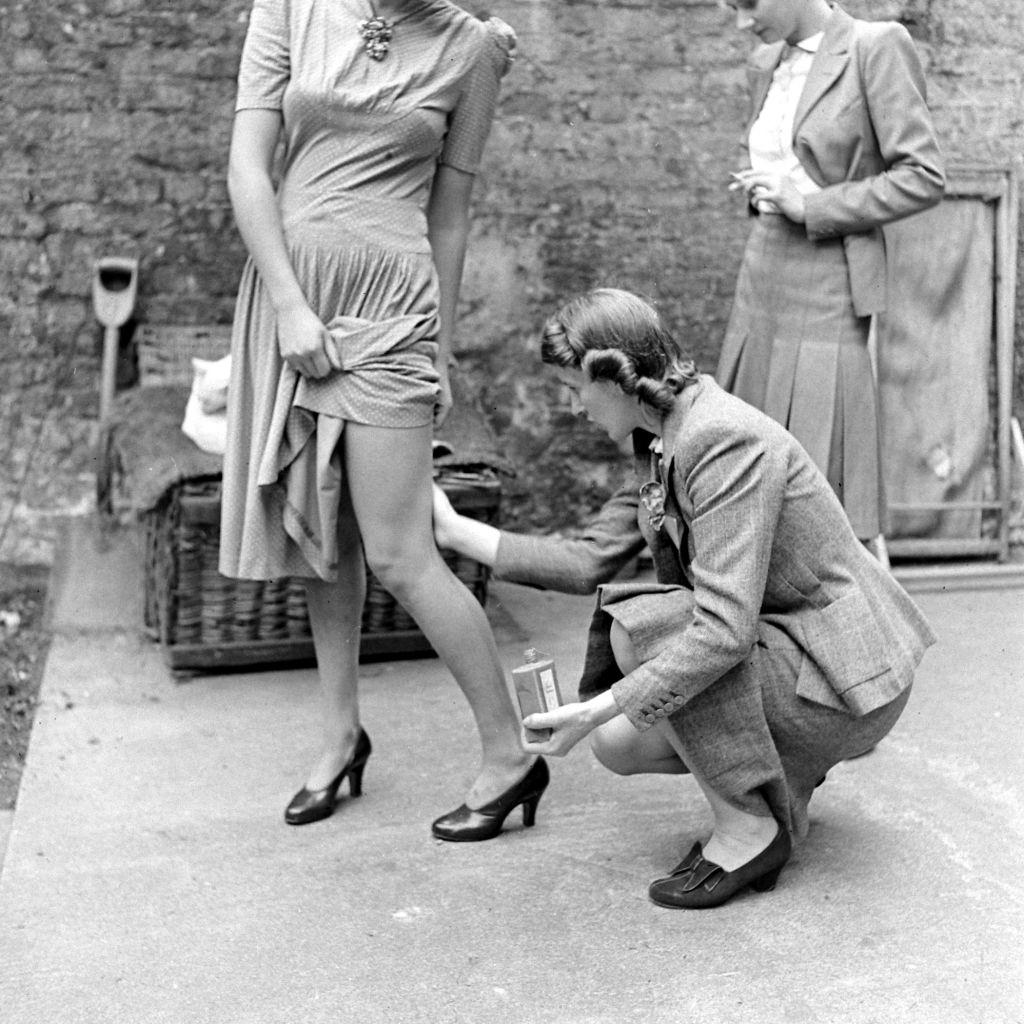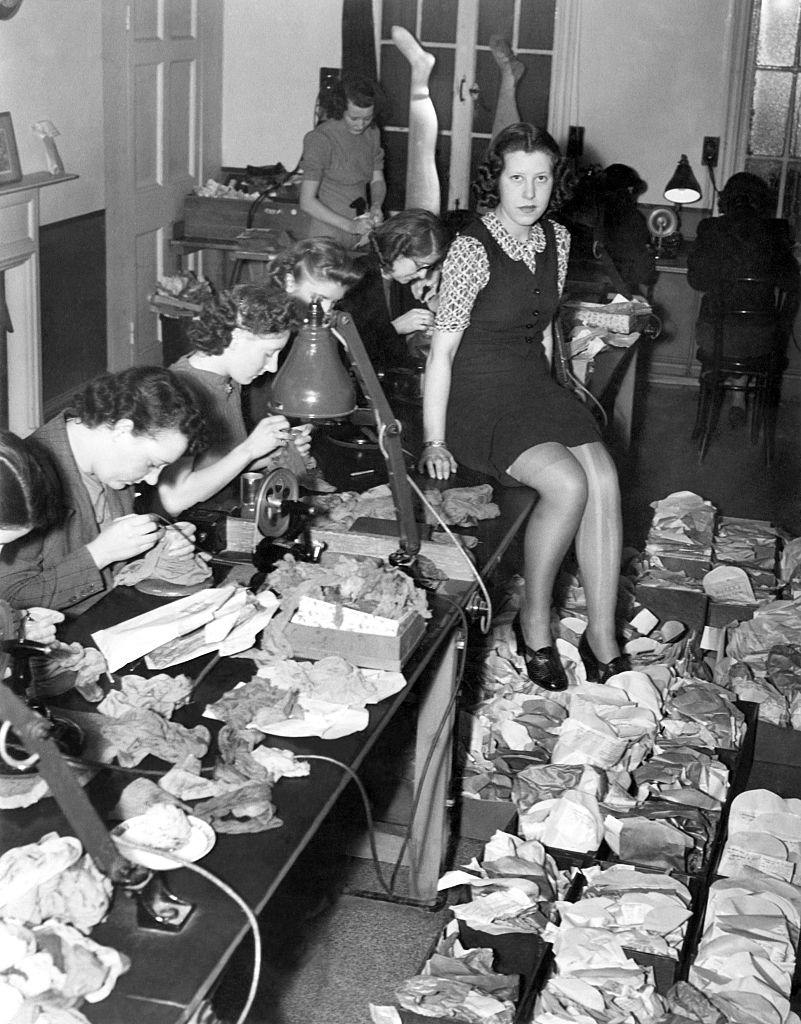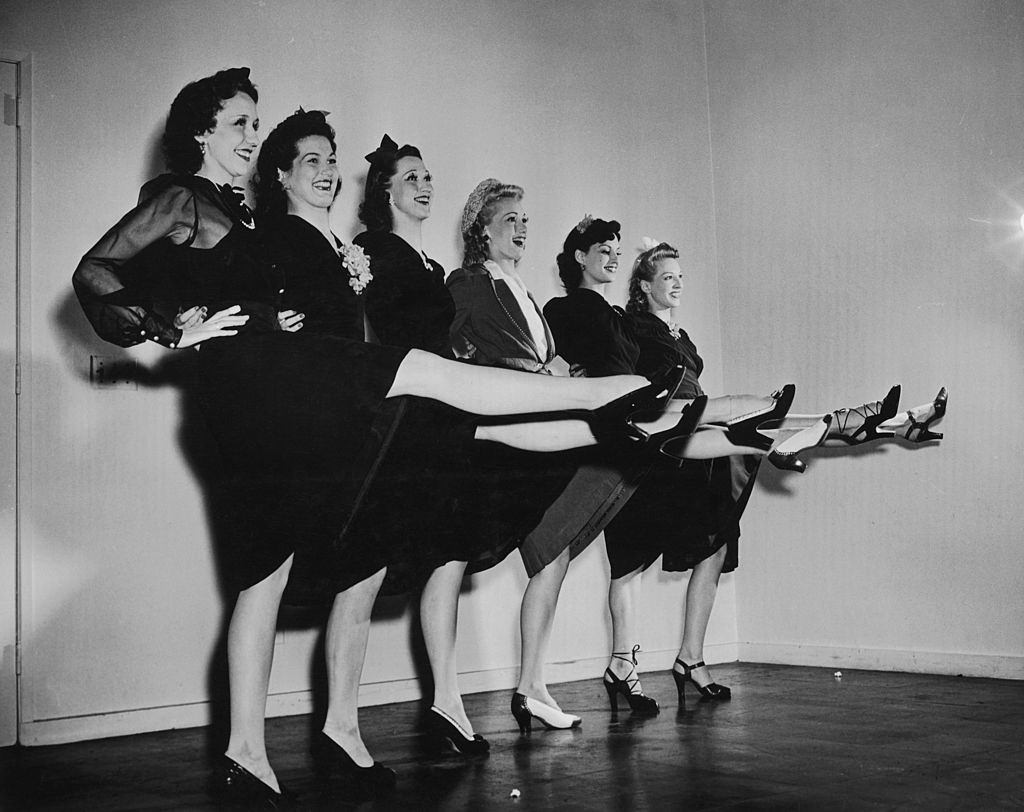The nylon stockings were first introduced in 1935 by Wallace Carothers. And they were introduced in the public in 1939 at the World’s Fair. It was marketed as a fabric made from “carbon, water, and air.” Cheap and durable, better in appearance than silk. And it soon became the material of choice for manufacturing women’s stockings.
In 1941, the Britain government and the US government introduced clothes rationing to preserve resources for World War II troops. Nylon stockings were some of the first products to go. They were all the rage at that time. The largest nylon manufacturer in the United States, DuPont used nylon in the production of nylon parachutes, cords, and ropes instead of stockings. The stockings black market flourished and the price hiked. In the meantime, women were instructed not to abandon stands of the dress. “Make Do and Mend’ became the motto. When mending old stockings failed, women painted dark stripes on their legs to mimic stockings. Gravy browning was a popular paint. This wartime look was termed “Glamor Hose.”
After the war when the production was resumed, over 40,000 women queued for 13,000 pairs of stockings in Pittsburg. Fight and protest also broke out and they were termed as the ‘Nylon Riots’.



























